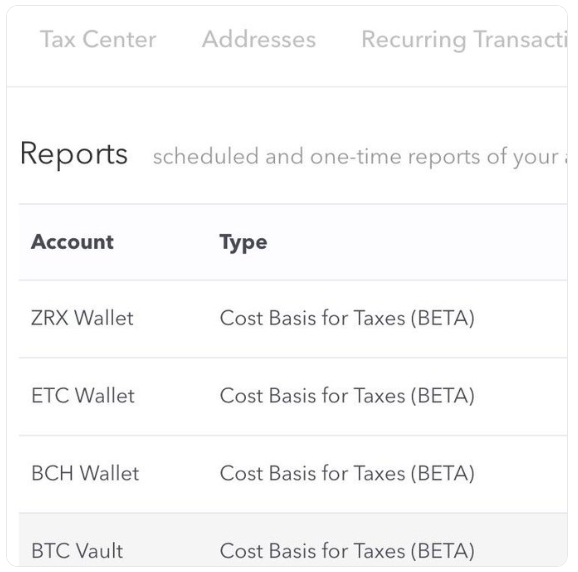
As an event-driven fund, Arca is constantly researching to find information that could impact asset price, independent of the broader market. Each month we’ll identify and share particular themes that emerge in the cryptomarkets, that lend itself to event-driven investments. Below we explore two event-driven themes that shaped our investment thesis over the past few months:
Once thought the golden ticket for cryptoassets, the price moves offered by a listing on Coinbase may now be dead. Below we explore the three latest tokens to list and how each one has had an increasingly diminished impact on price.


Bottom line: a Coinbase listing does not create additional fundamental value for an asset, therefore assets that are listed quickly drop back down in price. The long-term value of broad retail exposure offered by a Coinbase listing is something that may be felt over the course of many years, not from a quick flip during a two week period. That said, these three events were transparent, and profitable, as long as expectations and price targets were tempered with each subsequent listing. One might even question Coinbase’s motives here. Since every newly listed token is paired only with USDC, it’s possible these listings serve no purpose other than to build AUM for the USDC stabletoken as newly listed tokens are sold for USDC.
First of all, shout out to @TwoBitIdiot (Ryan Selkis), @ericturnr (Eric Turner) and the @Messari team for raising this point. Last week, Numerai’s CEO, Richard Craib, announced that in an effort to decentralize its network, the company will reduce/burn about 45% of total supply down to approximately 11M. The market reacted favorably to the news as the Numeraire (NMR) token jumped 40% to $2.80 before settling in the $2.40 range on the announcement date.
The (non-legal) takeaway here is obvious… burning excess supply increases perceived scarcity value which should drive the token price higher. While unilateral corporate actions like this certainly help short term @price action, some could argue that the increase was insufficient. In other words, NMR may still be undervalued because the burned tokens should not impact total network value, so theoretically a roughly 50% supply decrease means each coin should have doubled in price (Note, at the time of this writing NMR is ~$3.20 so the market is starting to correct the perceived mispricing).
Nonetheless, we think Numerai’s decision will resonate with other token projects looking to improve investor optics and generate interest in the project as there is no downside to the decision (tokens are a zero basis asset). So as a catalyst driven hedge fund in a bear market, we started thinking about:
i) other pre-mined coins
ii) whose treasury supply exceeded the circulating float which
iii) didn’t have an obvious need for the massive excess supply
We discuss certain projects (among others) fitting these criteria: Spankchain (SPANK), Gnosis, (GNO) and Polymath (POLY).
Let’s state the obvious… prediction markets need users to make predictions. A well-publicized coin burn should boost the price which would help drive interest and users to the platform. Combining a higher token price and a more active user base with a higher cash value payout for developer challenges should help bootstrap network effects during this bear market. Finally, to the extent Gnosis needs to raise additional funds in the future, a higher token price would obviate the need for selling a greater percentage of the remaining treasury supply. Again all upside and limited (if any) downside.
While we are in the early stages of crypto “corporate action”, we expect Numerai’s decision to kick-start similar activity from other projects looking to increase their visibility and improve “Hodler” optics. Projects can have many different reasons for burning (generate user interest, offset operating costs, etc.), but if the end result is increased interest, more usage and adoption, and a higher token price in the short run then that may be just enough to survive the cold bear market.
— The Arca Research Team
Follow us:
Medium Katie Talati & Hassan Bassiri
Twitter at @KatieTalati @HassanBassiri @Arca
Disclaimer: This commentary is provided as general information only and is in no way intended as investment advice, investment research, legal advice, tax advice, a research report, or a recommendation. Any decision to invest or take any other action with respect to any investments discussed in this commentary may involve risks not discussed, and therefore, such decisions should not be based solely on the information contained in this document. Please consult your own financial/legal/tax professional.
Statements in this communication may include forward-looking information and/or may be based on various assumptions. The forward-looking statements and other views or opinions expressed are those of the author, and are made as of the date of this publication. Actual future results or occurrences may differ significantly from those anticipated and there is no guarantee that any particular outcome will come to pass. The statements made herein are subject to change at any time. Arca disclaims any obligation to update or revise any statements or views expressed herein. Past performance is not a guarantee of future results and there can be no assurance that any future results will be realized. Some or all of the information provided herein may be or be based on statements of opinion. In addition, certain information provided herein may be based on third-party sources, which is believed to be accurate, but has not been independently verified. Arca and/or certain of its affiliates and/or clients may now, or in the future, hold a financial interest in investments that are the same as or substantially similar to the investments discussed in this commentary. No claims are made as to the profitability of such financial interests, now, in the past or in the future and Arca and/or its clients may sell such financial interests at any time. The information provided herein is not intended to be, nor should it be construed as an offer to sell or a solicitation of any offer to buy any securities, or a solicitation to provide investment advisory services.
These Stories on Investing Themes